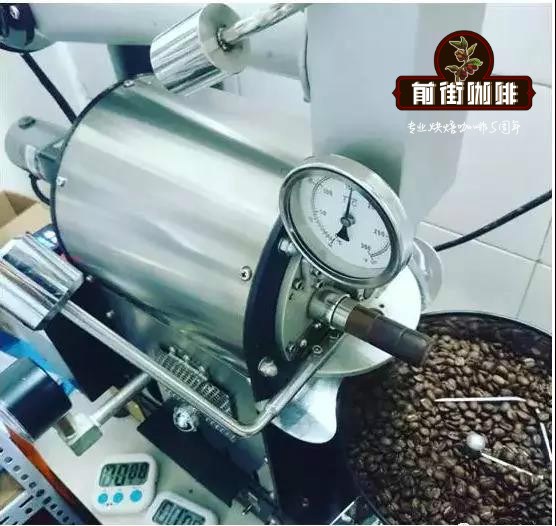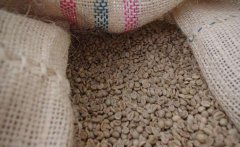Since drinking coffee won't satisfy your own roasting coffee beans, satisfy your roasting dreams.

Professional coffee knowledge exchange more coffee bean information please follow the coffee workshop (Wechat official account cafe_style)
As a fan of baking beans at home, you must have a way to choose the beans you want to bake, bake the beans with the best flavor, and finally make a cup of coffee in the way you want, and maybe your lucky friends and relatives will receive your own beans.
But the purchase of raw beans looks scary. How on earth can I find the right coffee for me? This article provides some simple ways to tell the difference between raw beans and find the coffee that suits your taste.
1. Place of origin:
That is, coffee is grown in what environment, including climate, humidity, soil and so on, which will affect the aroma and flavor of coffee. Slowly narrow the screening conditions from a wider range, and compare beans from different producing countries and different producing areas before comparing the differences between manors and batches.
two。 Variety:
Coffee can be divided into "species" and "varieties", and varieties are listed under species, and differences in varieties will have a great impact on coffee flavor. Tasting yellow bourbon, SL-28 or geisha will bring a completely different sensory experience.
3. Altitude:
Generally speaking, there are lower temperatures at higher elevations, which slows down the growth of coffee fruits, which in turn leads to higher sweetness. In the end, this kind of coffee will have a rich flavor, sweet feeling, and the sour quality will be more wonderful than low-altitude beans.
When considering altitude, don't forget that there are different temperatures in different producing areas. In Hawaii, for example, it is too cold to grow coffee 600 meters above sea level, but Kona is famous in Hawaii. But in Ecuador's Cologne Islands, coffee grown at an altitude of 200 meters can be defined as boutique coffee. These should be taken into account when assessing the altitude of coffee cultivation, especially coffee from different countries or continents.
4. Raw bean treatment:
How coffee beans (coffee seeds) are removed from the fruit.
Sun-treated / dry-treated coffee, the whole fruit will be directly exposed, and then the outer pulp will be removed, making the coffee beans sweeter and more fruity. Water-washed / wet-treated coffee will remove the pulp before drying, so it will have less sweetness, but at the same time, it has a higher flavor cleanliness and brighter acidity. Honey-treated coffee will first partially remove the pulp and retain part of the pectin layer for exposure, which makes honey-treated coffee sweeter and fuller than washed coffee.
In addition to the above three more common treatments, there may also be some treatments, such as monsoon treatment, wet peeling treatment, fermentation test, etc., which usually belong to specific areas, such as monsoon-treated coffee. Will only be stored in warehouses during the wet season in India.
There is nothing better than drinking your own coffee, which expands the range of coffee you can choose from and allows you to explore your favorite coffee that suits you best.
Finally, remember that the research is very helpful, but the best way is to do it yourself. the more coffee you drink and the more you compare, the easier it will be to find out which coffee you like.
Important Notice :
前街咖啡 FrontStreet Coffee has moved to new addredd:
FrontStreet Coffee Address: 315,Donghua East Road,GuangZhou
Tel:020 38364473
- Prev

Do you know what pests and diseases are the biggest threats to coffee?
Professional coffee knowledge exchange More coffee bean information Please pay attention to coffee workshop (Weixin Official Accounts cafe_style) What causes coffee diseases or attracts pests? Coffee, like all crops, is susceptible to pest infestation or disease, according to a report by CIRAD, the French agricultural research centre
- Next

How to drink aged coffee beans from Sumatra
Professional coffee knowledge exchange More coffee bean information Please pay attention to the coffee workshop (Weixin Official Accounts cafe_style) The so-called aged beans are not allowed to be stored for several years at will. If they are not treated in a specific way, the beans will rot after a long time. They will change from fresh turquoise to gray and yellow, completely lose flavor, or even mold and grow worms, which may cause coffee merchants.
Related
- Guji coffee producing area of Guji, Ethiopia: Humbela, Shakiso, Wulaga
- What is the most expensive variety of Qiloso in BOP multi-variety group?
- How to store the coffee beans bought home?
- Why are Yemeni coffee beans so rare now?
- Ethiopian Sidamo all Red Fruit Sun Sun Santa Vini Coffee beans
- SOE is mostly sour? What does it mean? Is it a single bean? what's the difference between it and Italian blending?
- Is Italian coffee beans suitable for making hand-brewed coffee?
- How to choose coffee beans when making cold coffee? What kind of coffee beans are suitable for making cold coffee?
- Just entered the pit to make coffee, what kind of coffee beans should be chosen?
- Can only Japan buy real Blue Mountain Coffee? What are authentic Jamaican Blue Mountain coffee beans?

